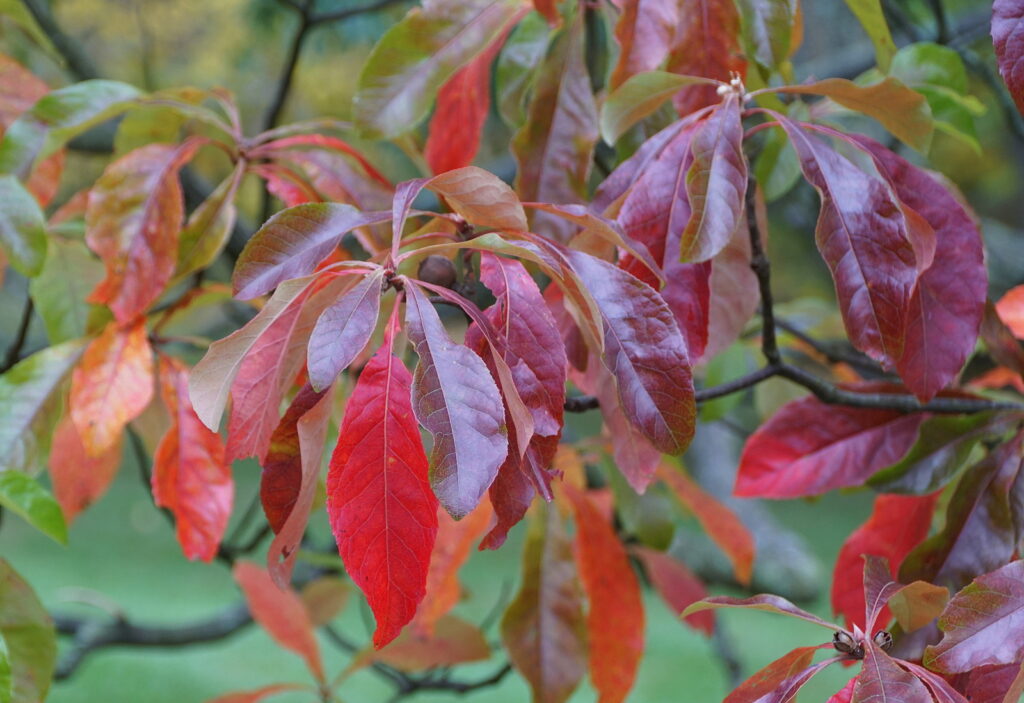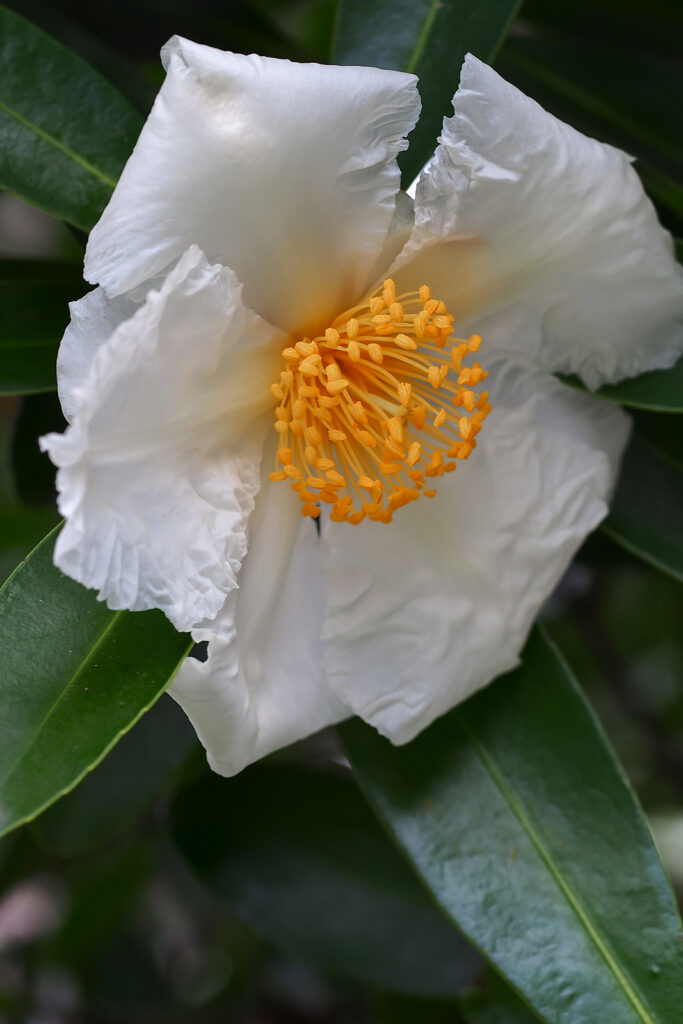Franklinia is a small deciduous tree grown for its showy camellia-like white flowers and colorful autumn foliage.
Franklinia has a slender, habit when grown from a single trunk. Its open branching shows off camellia-like five-petaled flowers in late summer and early autumn. Flowers appear at about the same time leaves turn red.
Franklinia grows to 15 feet tall and typically 10 to 20 feet wide. It can be trained to a single trunk as a small tree or it can also be grown as a sizeable multi-trunk shrub.
Plant Franklinia in November or April in moist peaty soil in a protected place.
Franklinia is native to the state of Georgia in the United States. It is thought to be extinct in the wild.
An evergreen tree very similar to Franklinia is Gordonia lasianthus, loblolly bay, which is native to the coastal plains from Virginia to Louisiana.

Get to know Franklinia
- Plant type: Deciduous small tree or shrub
- Growing zones and range: Zones 6 to 9
- Hardiness: Hardy to Zone 6
- Height and width: Grows 15 feet (5m) tall and wide; may reach 30 feet, but usually not; slender habit
- Foliage: Shiny dark green, spoon-shaped leaves grow 4 to 6 inches long; leaves turn orange and red in fall and hang a long time before dropping.
- Flowers: Fragrant 3-inch-wide five-petaled white flowers centered with clusters of yellow stamens
- Bloom time: White buds open in late summer and early autumn sometimes coinciding with autumn foliage color; flowers are followed by woody capsule split into ten segments each with five seeds.
- Uses: Open areas, woodland garden, specimen
- Common name: Franklinia
- Botanical name: Franklinia
- Family name: Theaceae
- Origin: Georgia, USA
Where to plant Franklinia
- Plant Franklinia in full sun or partial shade. Blooms are best in full sun.
- Grow Franklinia in humus-rich, well-drained soil acidic to neutral soil.
When to plant Franklinia
- Set outdoors container-grown Franklinia in the garden in spring or autumn.
Planting and spacing Franklinia
- Space Franklinia 15 feet (3m) or more apart.
How to water and feed Franklinia
- Keep the soil evenly moist for the best growth.
- Fertilize Franklinia in spring with an all-purpose organic fertilizer.

Franklinia care
- Mulch around Franklinia to keep the soil evenly moist and to keep weeds at bay.
- Franklinia usually needs no pruning.
Franklinia pests and diseases
- Franklinia can be attacked by Japanese beetles who eat the flowers.
- Can suffer from drought or root rot in poorly drained soil.
Franklinia propagation
- Sow seed as soon as it is ripe at 50° to 65°F (10°C).
- Franklinia is easy to grow from seed but flowering may not come for 6 or 7 years.
- Root softwood cuttings in summer with bottom heat.
Franklinia varieties to grow
- Franklinia alatamaha: Upright small tree grows to 15 feet (5m) tall; glossy to mid-dark green leaves turning red in autumn; shallow cup-shaped fragrant white flowers to 3 inches (8cm) across with bright yellow stamens.
Related Articles:
- 20 Perennials That Bloom for 6 to 8 Weeks
- Shrubs with Showy Flowers Season-by-Season
- Trees in Garden Design
- Growing Annuals for Summer Bloom
- Trees—click here for more articles
- Shrubs—click here for more articles
- Perennials—click here to see more
- Annuals—click here to see more















